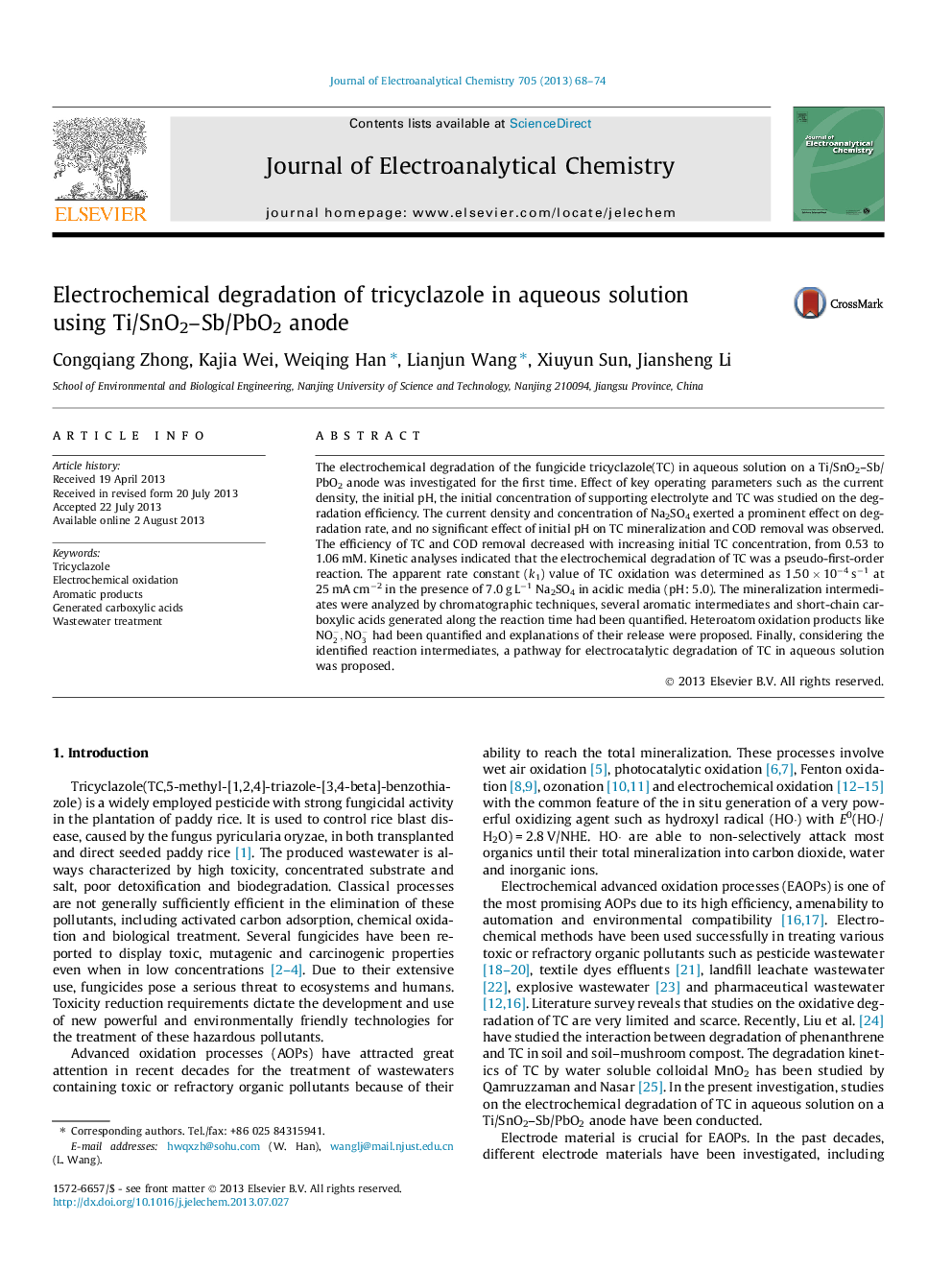| کد مقاله | کد نشریه | سال انتشار | مقاله انگلیسی | نسخه تمام متن |
|---|---|---|---|---|
| 219011 | 463234 | 2013 | 7 صفحه PDF | دانلود رایگان |

• Electrochemical degradation of tricyclazole in aqueous solution was very effective.
• The best experiment reached 93.4% removal of tricyclazole.
• Identification and evolution of the main intermediates was attained.
• A general electrochemical oxidation pathway of tricyclazole was proposed.
The electrochemical degradation of the fungicide tricyclazole(TC) in aqueous solution on a Ti/SnO2–Sb/PbO2 anode was investigated for the first time. Effect of key operating parameters such as the current density, the initial pH, the initial concentration of supporting electrolyte and TC was studied on the degradation efficiency. The current density and concentration of Na2SO4 exerted a prominent effect on degradation rate, and no significant effect of initial pH on TC mineralization and COD removal was observed. The efficiency of TC and COD removal decreased with increasing initial TC concentration, from 0.53 to 1.06 mM. Kinetic analyses indicated that the electrochemical degradation of TC was a pseudo-first-order reaction. The apparent rate constant (k1) value of TC oxidation was determined as 1.50 × 10−4 s−1 at 25 mA cm−2 in the presence of 7.0 g L−1 Na2SO4 in acidic media (pH: 5.0). The mineralization intermediates were analyzed by chromatographic techniques, several aromatic intermediates and short-chain carboxylic acids generated along the reaction time had been quantified. Heteroatom oxidation products like NO2-,NO3- had been quantified and explanations of their release were proposed. Finally, considering the identified reaction intermediates, a pathway for electrocatalytic degradation of TC in aqueous solution was proposed.
Journal: Journal of Electroanalytical Chemistry - Volume 705, 15 September 2013, Pages 68–74